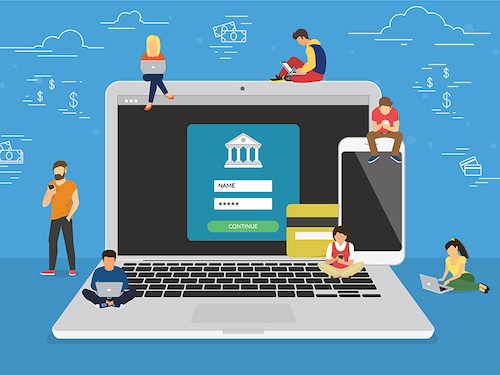Banking 2021: Without branches or borders
With rapid evolution and move towards branchless banking, we can expect to see a cultural shift in the way people think and use their money, meaningfully bettering their fortunes in ways never seen be


Banking is no stranger to the ubiquity of digitisation across all industries. This radical shift has disrupted old models of doing things in little and big ways, resulting in the creation of new opportunities for banks and financial institutions. This is not breaking news—the face of banking has been changing at a rapid pace all over the world. Complex challenges plague this sector and the growth of banking-focused technology might just be the holistic solution needed to tackle them. As developments roll out daily, banks are forced to compete by improving their offerings on a continual basis. Their customers emerge the ultimate winners.
The rise of branchless banking
One of the most exciting developments over the last few years has been the rise of branchless banking or direct banking. Branchless banks essentially offer banking services without the traditional network of bank branches. Instead, they serve their customers online or via an independent agent network that allows them to connect with their customer directly. Digitisation through branchless banking provides opportunities to these players to improve service, reduce costs, build loyalty and commitment in an increasingly fickle banking customer base—critical elements for survival for banks in the Covid-19 and post-Covid world. It also enables banks to meet growing regulatory and market expectations on how they can adequately serve the needs of an ever-expanding digital community.
Better customer service
Branchless banks offer something better than a large network of bank branches—they have created a branch right in their customer’s pocket. Accessing a full range of banking services at any time and from anywhere means that the customer’s convenience is being prioritised. Personalisation is the name of the game for most customers facing services. Experiences that feel tailored to specific customer needs are found to increase stickiness. For an industry that relies on customer trust and long term relationships, this is just another way to build deeper connections with customers. Today, customers want modern experiences. And as banks rush to transform their customer experiences, it is a challenge for them to seamlessly integrate different platforms that run processing, card controls, authentication, rewards and more. For this, banks need to focus on an integrated onestack platform that can help them provide neobank experiences. Whether it is managing deposits or applying for loans, digital banks make it possible for customers in a more secure and convenient way, without the hassle of long wait times, commutes, bank timings and more. Building better banking relationships with your customers has never been easier.
Increased democratisation of banking
The urgency to include everyone into the financial system cannot be overstated. Financial security is built by consistency in banking habits. But oftentimes, blockers to inclusion can begin with something as simple as a customer’s nearest bank branch being several hours away, has timings that do not work for shift workers, or bureaucracy that is too overwhelming for the financially illiterate. Branchless banks flatten these barriers easily, thanks to democriticastion by going digital. No matter how remote a customer, their age group, their socioeconomic class, or level of financial education, the power now lies with them. Through branchless banking, more and more people are setting up their first bank account, creating long term saving and investment plans, and accessing the help they need to better their lives. Branchless banking can be the boon that creates a just society that democratically disburses much needed financial services.
Low set-up costs and overheads
When branchless banking enters the picture, everything from commercial rentals to human resources to even office furniture becomes obsolete. These low set up costs allow banks to reach their customers quickly, serving their needs faster. Overheads are also reduced for both banks and customers—whether it is the time and wages lost by a customer having to cycle to their nearest branch to the cost of paperwork and processing units by the bank. The benefits of this reduction of expenditure is passed onto the customer. Banks are able to redirect funds formerly allocated to obsolete processes and facilities to optimising modern processes, to expand the range of services offered and to build more resilient systems their customers can rely on.
Digital-first thinking
With how seamlessly branchless banking integrates digital experiences into their customer’s everyday lives, do not be surprised if a drastic shift in modes of thinking is observed over the next decade or so. By centering technology and its power to build better banking systems, banks provide superlative experiences for their customers. Being able to embed legacy systems using cloud-native technology addresses customer needs without having to overhaul entire systems. Banks are able to go to market rapidly, serving customers needs in real time. Further, with digital-first and mobile-first, banks can launch a neobank experience with lower cost-to-income ratio, lower fraud rates, higher engagement and NPS. Customers in turn capitalise on these services and new experiences to build business, strengthen family finances, or even start thinking about their money for the very first time in their lives. This shift in thinking has exponential implications for individual citizens and the economy they drive—we can expect to see a cultural shift in the way people think and use their money, meaningfully bettering their fortunes in ways never seen before. The writer is CEO and Co-founder of Zeta
First Published: Dec 22, 2020, 12:42
Subscribe Now